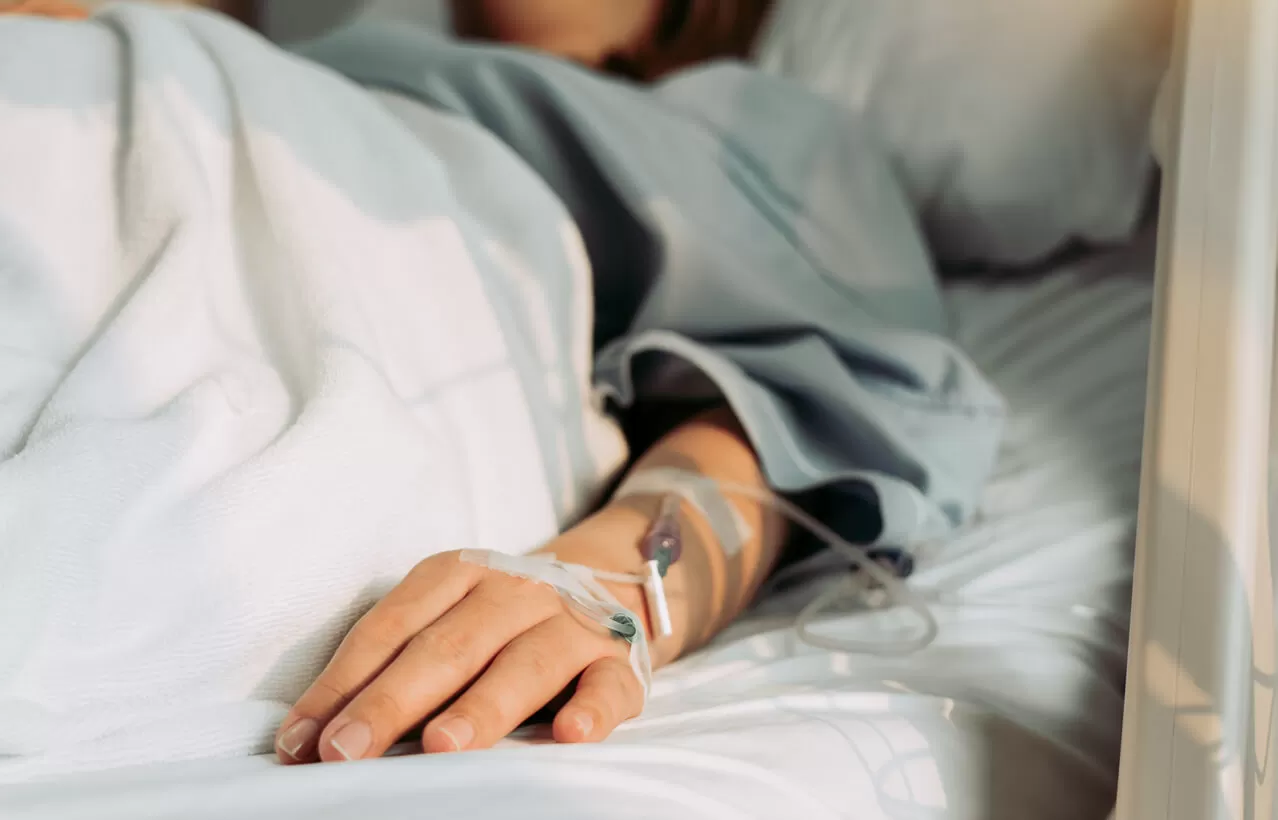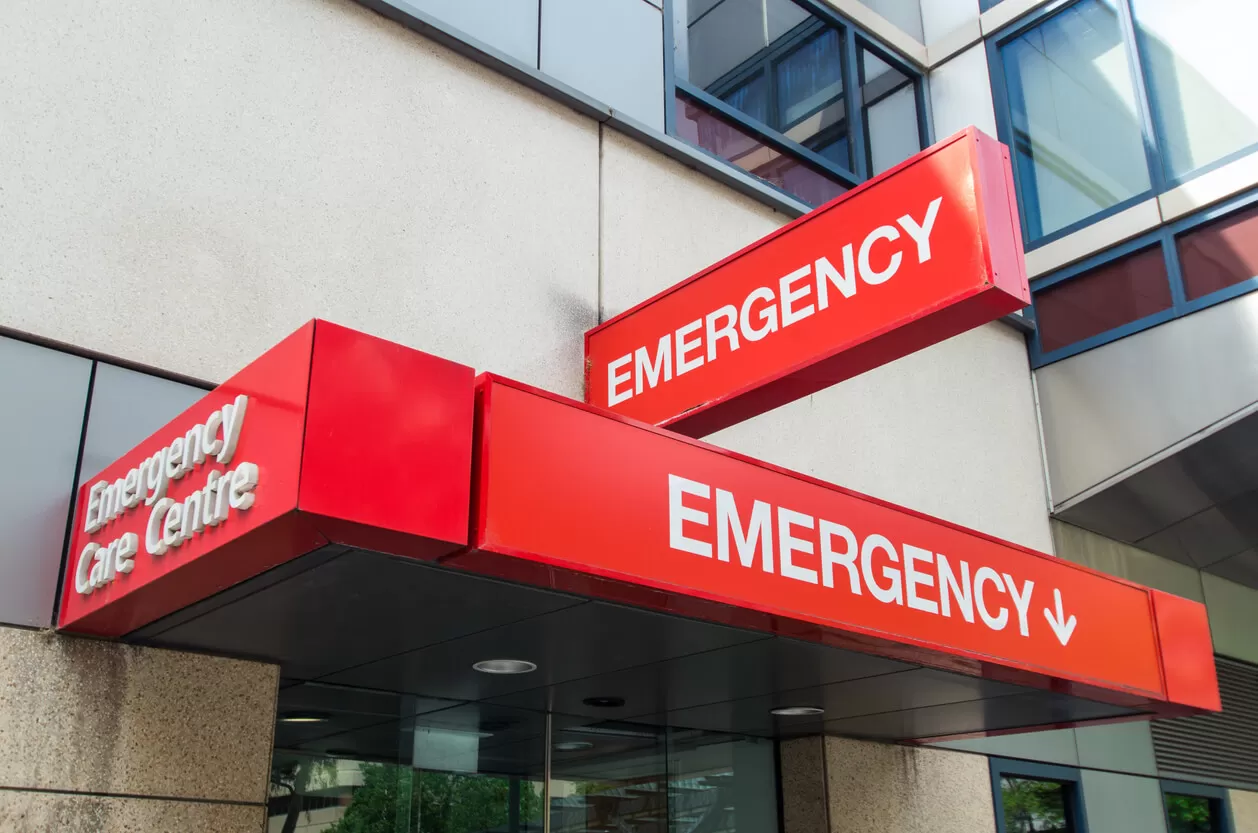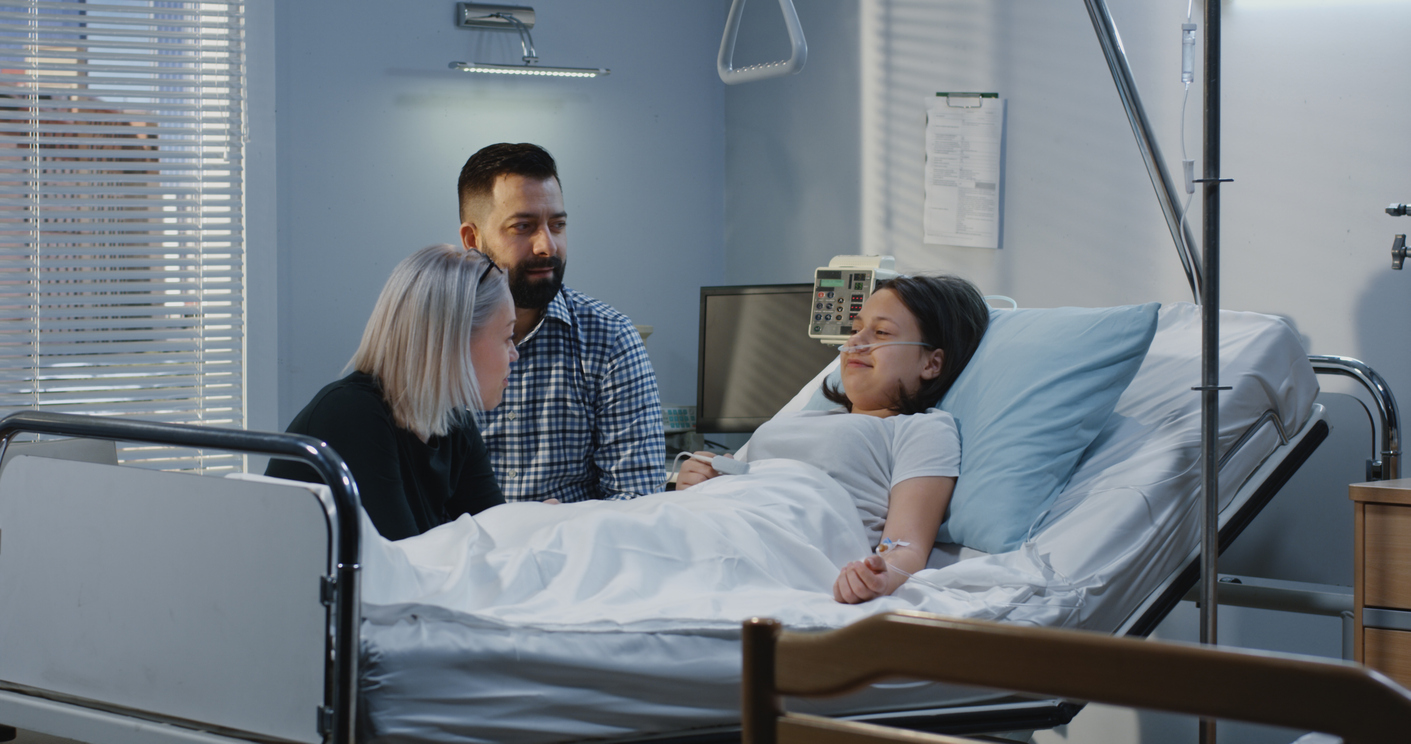Severe back pain can catch you off guard, disrupting your daily routine and causing considerable discomfort. In fact, a study found that 70% of people in resource-rich countries experience low back pain. While acute episodes often resolve on their own, they recur in 75% of cases, with some eventually worsening and persisting longer. Even after a year, 33% continue to suffer moderate pain, while 15% endure severe discomfort.
Understanding what triggers and relieves back pain, along with available treatment options, can empower you to decide when seeking care for pain emergencies becomes necessary. Taking proactive steps now can help you manage and potentially reduce future episodes.
Types of Back Pain
Acute Back Pain
Acute back pain can last up to four weeks and often results from sudden injuries or muscle strains. It typically presents as sharp, intense discomfort triggered by lifting heavy objects, falls, or swift movements.
Subacute Back Pain
Subacute back pain occurs when acute pain lasts four to twelve weeks or when mild injuries remain untreated. This type may not respond to initial rest or over-the-counter treatments and, if persistent, requires medical evaluation.
Chronic Back Pain
Chronic back pain persists beyond three months and is often linked to conditions like arthritis or disc degeneration. This prolonged pain can range from dull aches to sharp bouts and affect daily life.
Identifying Risk Factors for Back Pain
Understanding the risk factors contributing to back pain can help in taking preventive measures. Below are key factors that can increase the likelihood of experiencing back pain:
Sedentary Lifestyle
A lack of physical activity can weaken muscles, making the back more vulnerable to pain. Sedentary behaviors, such as prolonged sitting, can lead to muscle stiffness and aggravate existing back problems.
Age
As people age, they become more susceptible to degenerative spinal conditions. Older adults often experience wear and tear on the spine, leading to issues such as arthritis and disc degeneration.
Genetics
Genetic factors can increase the likelihood of developing back pain. A family history of spinal conditions, such as scoliosis or disc herniations, may predispose individuals to similar ailments.
Obesity
Carrying extra weight places additional strain on the back, increasing the risk of pain and discomfort. Excess weight can exacerbate pressure on the spine and contribute to the development of various spinal conditions.
Occupational Hazards
Certain jobs require repetitive motions or heavy lifting, which can lead to muscle strains and back injuries. Work environments that involve bending, twisting, or long hours of sitting can also negatively affect back health.
Causes of Back Pain
“Should you go to the emergency room for severe back pain?” Understanding the underlying causes can help you make this decision. Here are some common causes:
Muscle Strains
Back pain frequently stems from muscle strains, often resulting from activities like lifting heavy objects or making abrupt movements. These actions can lead to small tears in the muscles, causing sharp pain accompanied by a dull ache that can linger. This not only limits mobility but also makes simple activities uncomfortable, affecting your daily life.
Herniated Discs
A herniated disc occurs when the soft center of a spinal disc pushes through a crack in the tougher exterior casing. This condition often results in pressure on nearby nerves, leading to pain and discomfort. Symptoms may vary depending on the disc affected, but back and leg pain are common, and the condition often necessitates medical evaluation to prevent worsening.
Arthritis
Spinal arthritis involves inflammation of the joints in the spine. Over time, this can cause a breakdown of cartilage, leading to chronic pain and stiffness. Persistent pain makes everyday tasks challenging, and bending or walking can become laborious, impacting your quality of life.
Spinal Stenosis
Spinal stenosis occurs when the spaces within the spine narrow, leading to pressure on the spinal cord and nerves. This results in pain, tingling, numbness, and muscle weakness, most commonly in the lower back and legs. As the condition progresses, symptoms can intensify, often requiring medical intervention to manage effectively.
Traumatic Injuries
Sudden impacts or accidents can cause significant damage to the spinal structures. Such injuries might include fractures, dislocations, or ligament damage, contrasting with more routine muscle strains. Immediate medical attention is often necessary, as the stability of the spine and surrounding tissues needs examination to prevent further injury.
Kidney Infections
Sometimes, back pain can signal a deeper issue, such as a kidney infection. The pain usually originates in the mid-back region, near the kidneys. Accompanying symptoms might include fever, chills, or urinary changes, necessitating immediate medical care to address underlying causes and prevent potential kidney damage.
Emergency Conditions Causing Back Pain Symptoms
Certain conditions that lead to back pain require immediate medical attention due to the seriousness of their symptoms and potential complications. Understanding these conditions helps in recognizing when emergency care is necessary:
Cauda Equina Syndrome
Cauda equina syndrome is a rare but severe disorder resulting from significant nerve compression at the lower end of the spinal cord. Symptoms may include severe back pain, weakness in the legs, and loss of bladder or bowel control. Urgent treatment is vital to avoid permanent nerve damage and restore function.
Spinal Fractures
Spinal fractures can occur due to severe trauma, such as falls or car accidents. These fractures lead to instability in the spine and cause intense pain, requiring immediate evaluation and medical intervention to prevent further injury and complications.
Kidney Stones
Kidney stones can cause sharp, acute pain radiating from the back to the abdomen and groin. The intense pain they cause often necessitates medical management to alleviate symptoms and, in some cases, break down or remove the stones.
Spinal Infections
Infections in the spine caused by bacteria or fungi lead to inflammation and significant pain. Without prompt treatment, these infections can spread and cause permanent damage. Early intervention helps manage symptoms and prevent serious complications.
Abdominal Aortic Aneurysm
An abdominal aortic aneurysm occurs when a large blood vessel in the abdomen becomes enlarged. If it ruptures, it can cause sudden and severe back pain, as well as internal bleeding. This condition requires immediate emergency care to address the life-threatening risk associated with aneurysm rupture.
Can You Go to the Emergency Room for Severe Back Pain?
If you’re experiencing severe back pain, assessing your symptoms can help determine if a visit to the emergency room is necessary. Here are situations where seeking emergency care is advisable:
Loss of Leg Function
If you suddenly find yourself unable to move one or both legs or experience significant weakness, it may indicate nerve compression in the spine, such as in cauda equina syndrome. This condition requires immediate medical attention to relieve pressure and prevent irreversible damage.
Bladder or Bowel Control Issues
Sudden difficulty in controlling your bladder or bowel movements may signal severe nerve issues. Such symptoms necessitate an urgent trip to the emergency room to diagnose and treat the underlying problem promptly.
Severe Pain Unrelieved by Over-the-Counter Medications
If standard pain relievers do not diminish the severity of your back pain, it could indicate a more serious underlying condition. Persistent, intense pain should not be ignored, as timely professional intervention aids in proper diagnosis and pain management.
Fever Accompanied by Back Pain
A fever alongside severe back pain might suggest an infection, such as a spinal or kidney infection, requiring immediate medical evaluation to prevent the infection from spreading.
Recent Trauma or Injury
Following an accident or fall, any back pain associated with trauma should be promptly examined. There’s a risk of fracture or internal injury that needs immediate attention to prevent further complications.
Sudden, Unexplained Weight Loss
If back pain is accompanied by rapid and unexplained weight loss, this could be indicative of serious underlying conditions, such as cancer or severe systemic diseases, warranting an urgent medical evaluation.
Chest Pain Accompanied by Back Pain
If severe back pain occurs alongside chest pain, it could signal serious conditions such as a heart attack or aortic aneurysm. This requires immediate emergency room intervention.
Difficulty Breathing
Experiencing shortness of breath along with back pain might suggest serious cardiac or pulmonary issues, necessitating urgent medical evaluation to pinpoint the cause and begin treatment.
Dizziness
Feeling dizzy when experiencing severe back pain can indicate cardiovascular or neurological issues that require immediate investigation and care.
Loss of Consciousness
If a loss of consciousness accompanies severe back pain, it is a medical emergency that necessitates swift medical evaluation. This situation could relate to significant neurological issues or other severe conditions that require immediate attention.
What to Expect at the Emergency Room for Severe Back Pain
When you arrive at the emergency room with severe back pain, you can anticipate a thorough and structured approach to care aimed at diagnosing and addressing your pain effectively.
Step 1: Initial Assessment
- Triage. Upon arrival, the triage process helps prioritize patients based on the severity and urgency of their condition. Those in critical pain or exhibiting alarming symptoms are typically given immediate attention, ensuring their needs are addressed swiftly.
- History and Symptoms. Medical staff will discuss your health history and current symptoms with you. This conversation is vital for understanding the nature and duration of your back pain and any relevant medical conditions that you may have. This information guides the medical team in tailoring the appropriate diagnostic and treatment strategy for your condition.
Step 2: Physical Examination and Diagnostic Tests
The medical team will conduct a physical examination focused on evaluating your spinal health, muscle integrity, and nerve function. This includes testing reflexes, sensation, and movement to gauge the extent of your pain and discomfort.
In addition to the physical exam, diagnostic tests such as X-rays or MRIs can provide detailed images of the spine, helping uncover possible structural problems like fractures or herniated discs. Blood tests may also be performed to identify any potential infections or systemic issues contributing to your pain.
Step 3: Pain Management and Treatment Options
- Medications. To manage your pain effectively, you may be administered medications like NSAIDs, opioids, or muscle relaxants. These medications can help reduce pain intensity and improve your comfort during the assessment.
- Alternative Measures. In addition to medications, alternative measures such as applying heat or ice packs can provide symptom relief by reducing inflammation and muscle tension.
- IV Therapy or Injections. For severe cases, intravenous therapy or anti-inflammatory injections may be necessary to deliver faster pain relief and address deeper inflammation.
Step 4: Referral and Hospital Admission Considerations
If your symptoms do not respond to initial treatments or if serious underlying conditions are suspected, the medical team may recommend hospital admission. This allows for further monitoring and specialist care to manage complex cases that require ongoing evaluation and tailored interventions.
Step 5: Discharge and Follow-Up Care
- Home Instructions. Upon discharge, you will receive guidance on lifestyle modifications and self-care tips aimed at preventing the recurrence of back pain. This may include advice on posture, activity limitations, and exercises that you can do at home.
- Physical Therapy. Additional recommendations for physical therapy may be provided to assist in rehabilitation. Physical therapy helps strengthen the muscles supporting the spine, enhances mobility, and facilitates a smoother recovery process.
Preventive Measures and Lifestyle Changes
Implementing specific preventive measures and lifestyle adjustments can significantly lower the risk of developing or worsening back pain. Here are some essential strategies:
- Ergonomics. Adopting ergonomic practices at work and home helps minimize back strain. Use adjustable chairs to support your lower back and position your computer screen at eye level to prevent neck strain.
- Exercise. Regular physical activity strengthens muscles that support the spine. Activities like walking, swimming, or yoga enhance flexibility and help maintain overall back health.
- Weight Management. Maintaining a healthy weight reduces stress on the spine. Excess weight can increase strain on the lower back, so a balanced diet and regular exercise are important prevention strategies.
- Safe Lifting Practices. When lifting, bend at the knees, keep your back straight, and hold objects close to your body. Avoid twisting while lifting to prevent strains and injuries.
- Proper Footwear. Wearing supportive footwear can greatly affect posture and alignment. Proper shoes provide stability, reducing strain on the back during standing or walking.
- Stress Management. Stress can lead to muscle tension and worsen back pain. Techniques such as deep breathing, meditation, or gentle stretching help relax muscles and lower stress levels.
- Regular Medical Checkups. Routine medical checkups can help identify potential back issues early. Regular evaluations by a healthcare professional guarantee that spinal health is monitored and any concerns are addressed promptly.
Act Now for Relief: Your Back Deserves the Best Care
Your health is our priority, and recognizing severe back pain early can make a significant difference in your recovery journey. At Reliant Emergency Room, we offer comprehensive care tailored to your needs, providing advanced diagnostics and personalized treatments. By taking proactive measures and making informed choices, you stand a better chance of managing your pain effectively.
Our skilled team is ready to assist you 24/7, delivering prompt and compassionate service. If you’re facing unmanageable back pain, don’t wait—reach out to us for expert care and start your journey toward relief and improved quality of life.








